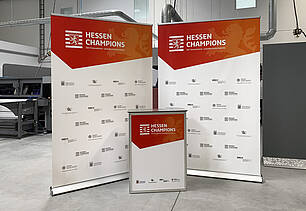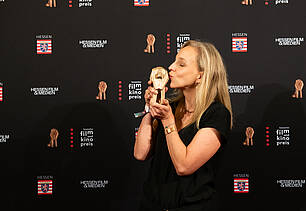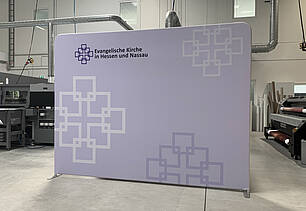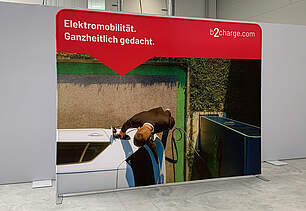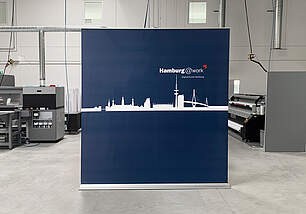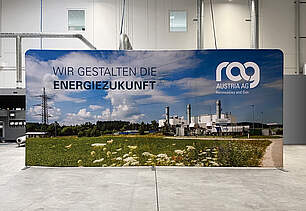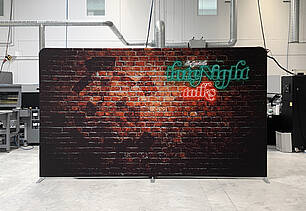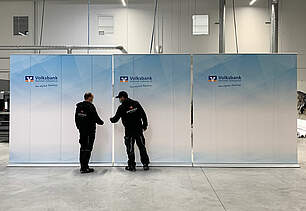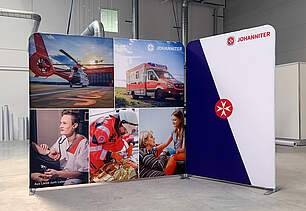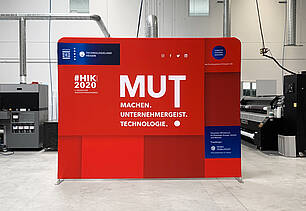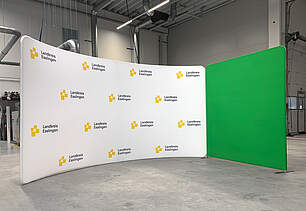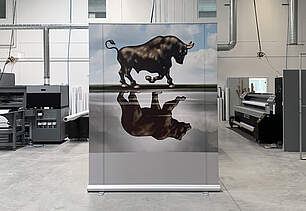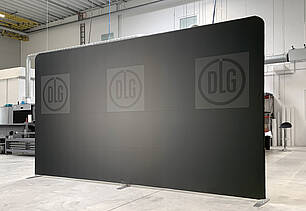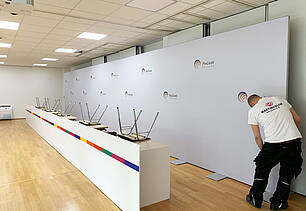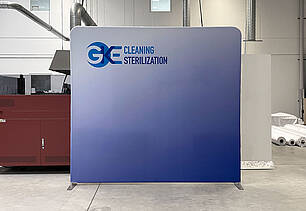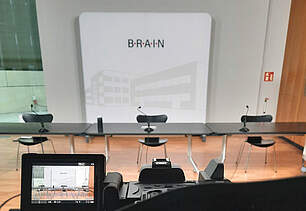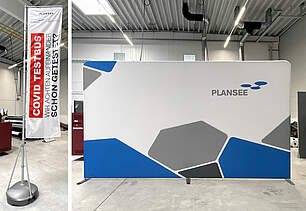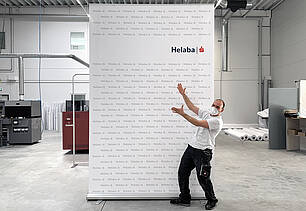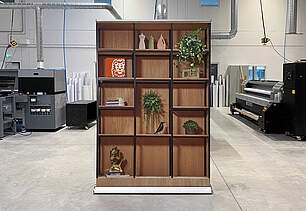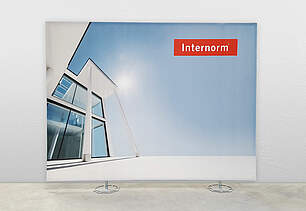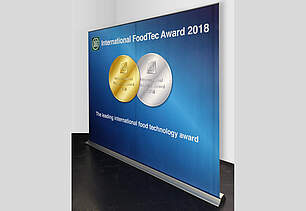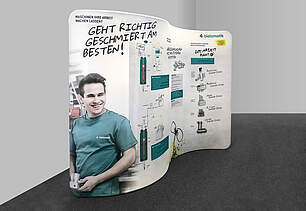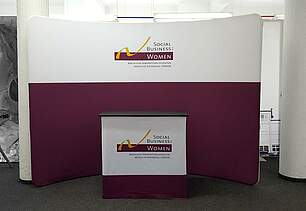Press wall
Here you can see many examples of press walls and back walls for video conferences that we have implemented for our customers. A press wall is a free-standing, printed backdrop wall that is used at events, press conferences or photo shoots. It is used to prominently display logos, sponsors or brands and to create a professional backdrop for interviews, photos and videos. Our press walls are usually mobile and easy to set up. They can be individually printed on one or both sides.
FAQ
A press wall, also known as a ‘media wall’ or ‘photo wall’, is a large-format back wall that is often used at events, trade fairs, press conferences and advertising events. It serves as a backdrop against which photographs or videos of people are taken. Logos, sponsors or brands are usually displayed on the press wall in a graphically appealing way so that they are clearly visible in the photos. The purpose of the press wall is to increase the visibility of the company or brand and create a professional environment for media appearances.
There are several types of press walls, which differ in size, material and structure:
ZippWall back walls: These walls consist of an aluminum tube frame that can be plugged together, over which a printed, non-reflective textile cloth is stretched. This is fixed to the bottom of the system frame with a zipper. ZippWalls are available in many widths, are easy to transport and inexpensive.
Folding displays: Pop-up systems consist of a folding scissor grid system. Graphic panels fitted with magnets are attached to the easily assembled and disassembled walls. They are ideal for quick deployment and offer a high-quality printed image.
Modular walls: Our ISOframe exhibition systems are a good example of modular back walls. If a press wall is produced from this system, it can be customised in width to suit the respective event location. In addition, the back wall can be flexibly moulded into a wave, circular or curved shape, which enhances the high-quality visual impression of this wall system.
LED walls: These walls are backlit and offer a luminous, visually appealing presentation for use in darker rooms or to attract more attention. However, it should be noted that illuminated walls are not suitable for use as photo back walls, as the people photographed in front of them will appear dark.
A press wall offers numerous advantages for companies:
Brand presence: your key visual, logos and slogans are prominently displayed on press walls, which promotes company and brand recognition.
Professional appearance: a press wall creates a clear and professional presentation area that enhances the event or photo shoot.
Versatility: press walls can be used at trade fairs, conferences, photo shoots and other events, making them a versatile marketing tool.
Advertising effectiveness: sponsors and partner companies gain additional visibility by placing their logos on the press wall.
The assembly of a press wall depends on the system used, but is usually quick and uncomplicated:
ZippWall back walls: The system frame made of aluminium tubes is simply plugged together for assembly. A textile covering is then stretched over the frame like a pillowcase and fastened at the bottom with a zip fastener. That's it!
Pop-up walls: The scissor grid structure of a folding display can be ‘popped up’ in a single movement. The frame is then locked in place and the graphic panels are magnetically attached to the system.
Modular walls: Modular walls consist of a system structure that can be used individually or with several modules placed next to each other. Here too, the modules can be mounted without tools.
LED walls: Illuminated walls can be set up ready for use in no time at all. The wall consists of aluminium profiles that are already fitted with LEDs. These are simply plugged together to form a frame and then covered on both sides with a textile film.
The size of the press wall depends on the type of event and the space available. Typical press walls are 2 to 2.5 metres high and vary in width from 2 to 6 metres. If several people are to be photographed in front of the wall at the same time, a larger width is an advantage. Smaller press walls are more suitable for interviews or confined spaces. Modular systems allow flexible adjustment of the size, while prefabricated systems have fixed dimensions.
Most press walls consist of an aluminum frame that is light but stable. The graphics are usually printed on textile or panel materials. Textiles offer a high-quality, crease-resistant surface and vivid colour reproduction, while graphic panels produced using UV or latex printing have excellent sharpness of detail. In LED press walls, the illuminated frames are covered with brilliant textile material, which is produced using sublimation printing and ensures even illumination.
Yes, most press walls are designed for multiple use. You can change the graphics if you want to use the wall for different events or advertising partners. Systems such as ZippWall back walls or pop-up folding displays are particularly easy to transport and can be used again and again if well maintained. This makes them a cost-effective solution for companies that regularly organise press conferences, events or trade fairs.
The cost of a press wall varies depending on the size, material and equipment:
Smaller, simple textile stretch walls cost between €500 and €1,000. Medium-sized folding displays are around €1,500 to €2,000. Modular press walls are more flexible and cost between €1,000 and €3,000, depending on the features and size.
The most expensive options are LED exhibition walls and illuminated walls, as they contain special lighting technology. These can cost between €1,000 and €5,000 or more.
MARTINCOLOR GmbH & Co. KG
Gaugrafenstraße 24 d | 60489 Frankfurt am Main | Phone +49 (0) 69 756080-0 | Fax +49 (0) 69 756080-88 | info(at)martincolor.de
OUR OPENING HOURS
Monday – Friday from 9 a.m. to 6 p.m.


